I would like to share with you what you can do with 5 TIPS and how to manage one of...
Read MoreHow to Deal with Frozen Shoulder (5 TIPS)

January 20, 2025
How to deal with Frozen Shoulder?
Hi, it’s Satoru from hariQ acupuncture & herbs. In this blog post, I would like to explain how to deal with frozen shoulder at home. Frozen shoulder is a disorder in which the range of motion of the shoulder gradually decreases, along with pain. Recovery takes several months up to 3 years. It can be really daunting and stressful to think that it might take up that long time. But don’t worry! you can follow these 5 tips to speed up the recovery process, and hopefully, you can comb your hair or play tennis or golf soon.
We understand this can be a lot of information and overwhelming: if you are looking for more support and answers, set up a free consultation with our Frozen Shoulder Specialist, Satoru Ozawa. Share your story, get your questions answered, and learn how you can set yourself up for tremendous success in achieving a healthy life.
What is Frozen Shoulder?
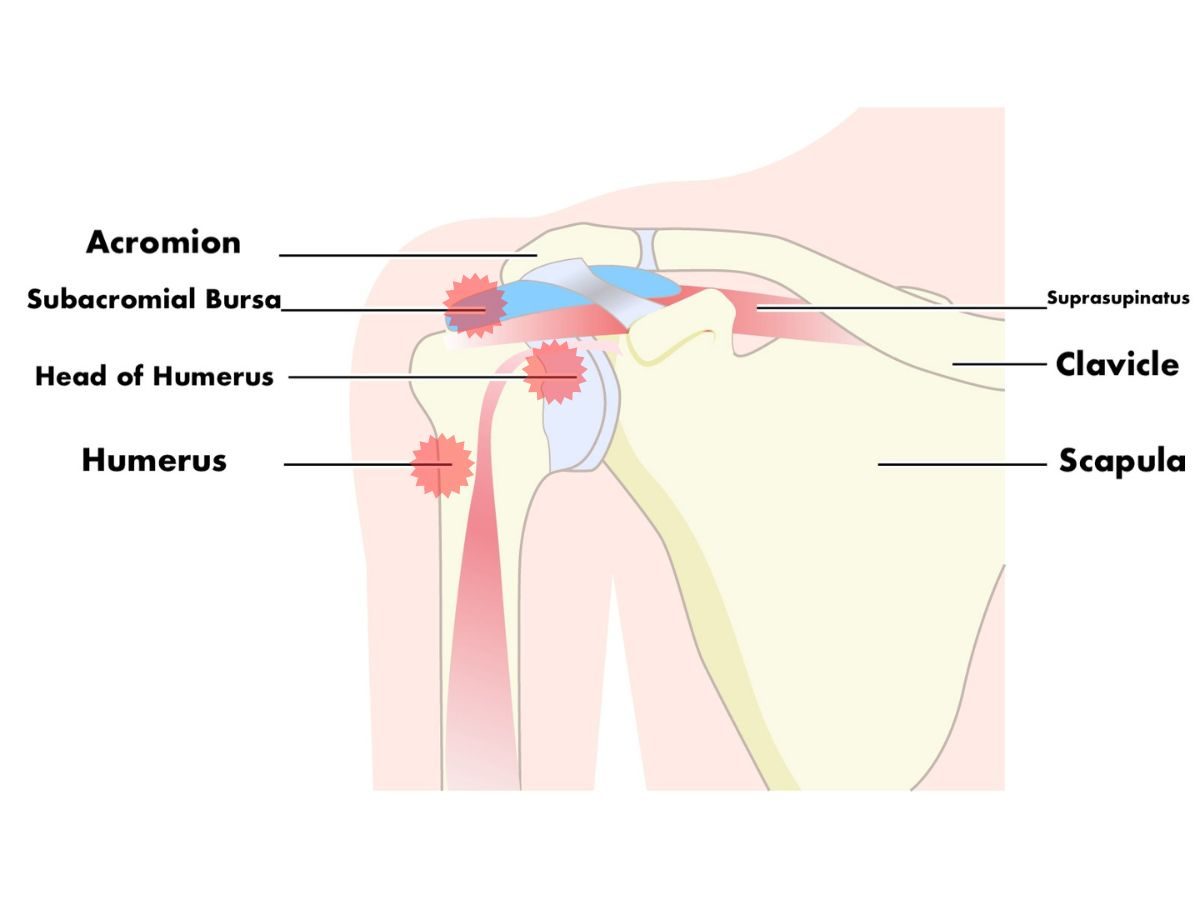
A frozen shoulder, also known as glenohumeral adhesive capsulitis, occurs when the synovial fluid inside the shoulder capsule becomes thick, decreasing the joint’s flexibility. Synovial fluid is a liquid found in every joint and tendon, and it decreases friction and inflammation during joint movement.
What Causes Frozen Shoulder?
The exact causes of frozen shoulders are still unknown, but certain risk factors, such as diabetes, thyroid disease, heart disease, and stroke, can lead to a frozen shoulder.
Also, women are at higher risk of developing it, and being over the age of 40 is a significant factor in the thickening of synovial fluids in the joints, leading to frozen shoulders.
How Long Does it Take to Recover Frozen Shoulder?
The recovery process is different for each case, but in general patient recover from frozen shoulder in several months and sometimes it takes up to 3 years to regain the shoulder mobility.
3 Stages of Frozen Shoulder
There are 3 stages of Frozen shoulder progress, Freezing, Frozen & Thawing.
1. Freezing
At the initial stage, you may experience pain and stiffness in your shoulder. Over time, the pain worsens, making shoulder movement difficult. This stage typically lasts for 6-9 months.
2. Frozen
In the second stage, the pain begins to decrease, but the stiffness persists. Everyday activities such as combing your hair or reaching behind your back may become challenging. This stage typically lasts for 4-6 months.
3. Thawing
In the final stage, stiffness gradually reduces, and the range of motion begins to return. This stage can last from 6 months to 2 years.
How to deal with Frozen Shoulder at home? (5 Tips)
While steroid injections can effectively help 75% of frozen shoulder cases, there are alternative options that can be done at home before resorting to such a treatment. By taking proactive measures, you can potentially avoid the discomfort of a needle injection or combine these therapies with the injections.
1. Stretch
Stretching the shoulders definitely helps improve shoulder mobility and loosen the joint capsules. Due to muscle tightness surrounding the shoulder joints, known as the rotator cuffs, shoulder mobility can be limited, particularly external rotation and abduction of the shoulder. I created 3 step shoulder stretching routine with a water bottle the other day. For more information, How To Use A Water Bottle To Stretch For Frozen Shoulder (3 Steps)
2. Active Assisted Exercise
When you do active-assisted exercise, you move your shoulder joints with a little help from a cane or strap. This kind of exercise helps you become more flexible and stronger, improves circulation, and lowers the risk of shoulder joint stiffness and contractures.
You can also use an umbrella to support your shoulder movement to push a little bit more when your shoulder mobility is limited, such as in the case of frozen shoulder.
Active Assisted Abduction
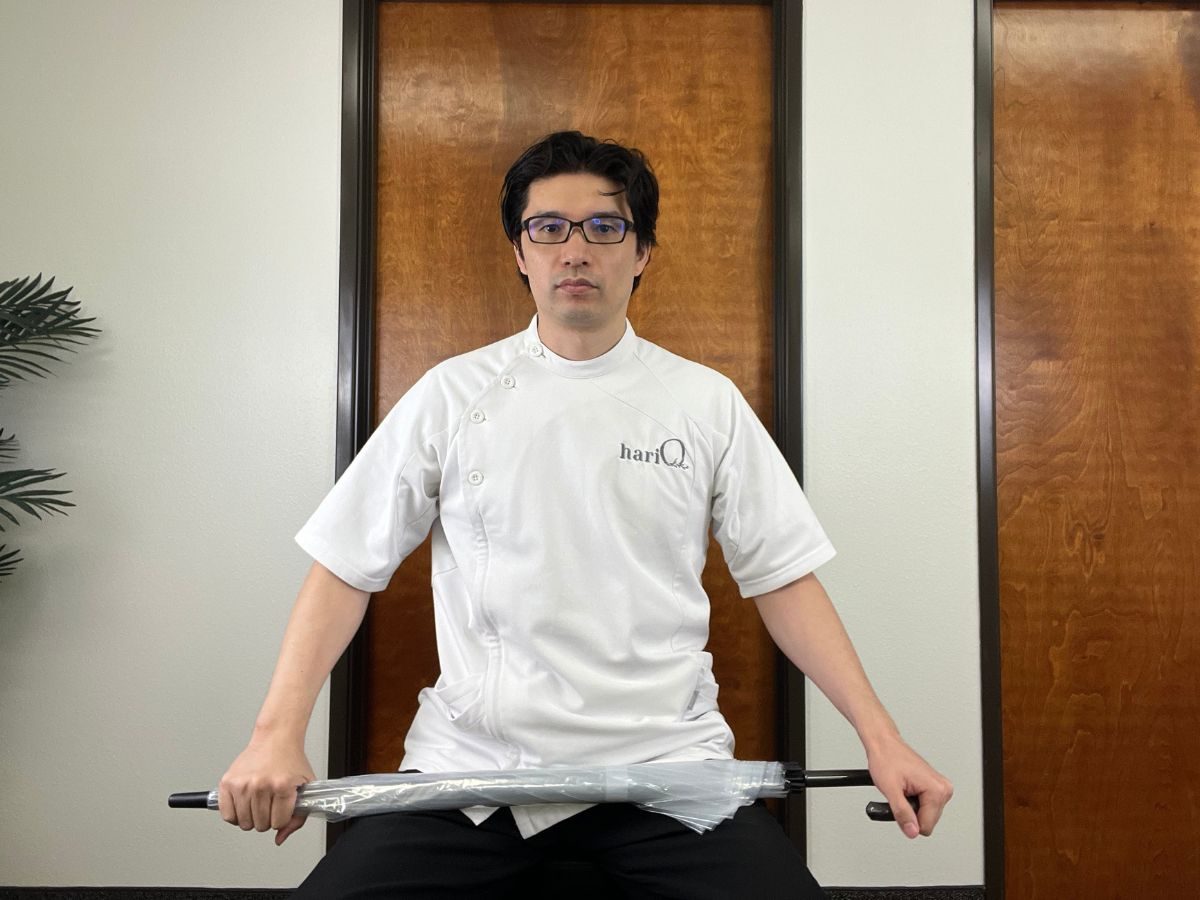
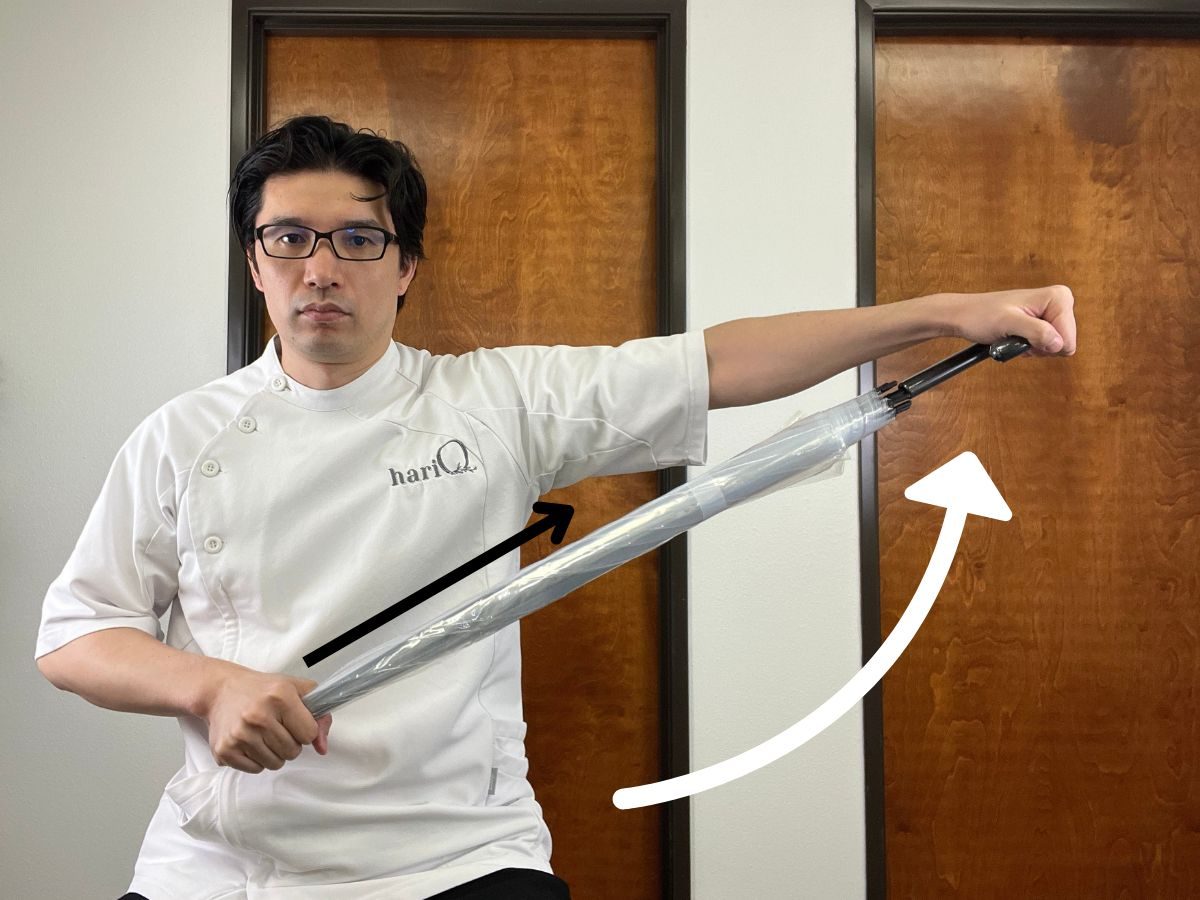
If you’re dealing with frozen shoulder in your left shoulder, grab a chair and an umbrella. Sit down, and then gently move your left shoulder outward as far as you comfortably can. If you experience any discomfort, use the umbrella with your other hand to push and help raise your shoulder a little further. Take a moment to relax, and then repeat this process three more times.
Active Assisted External Rotation
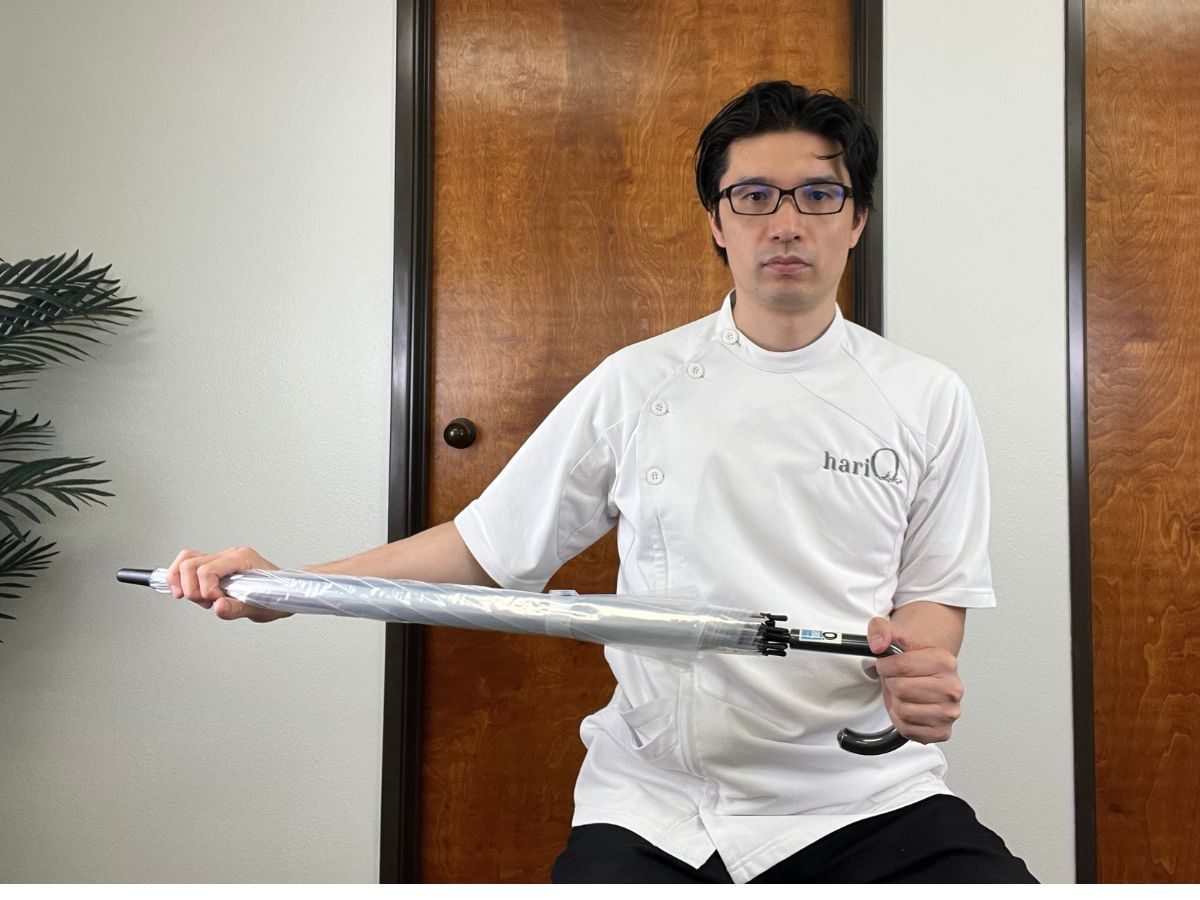
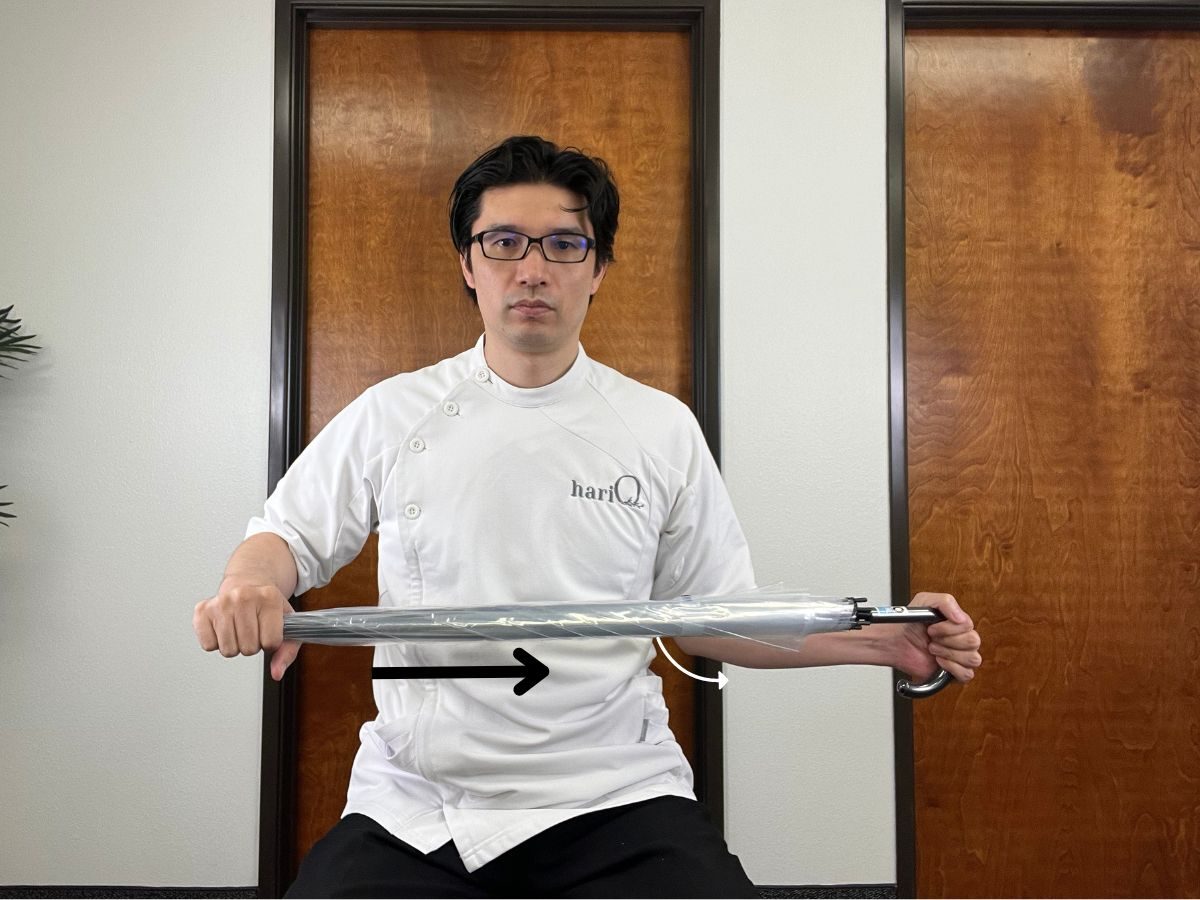
The second exercise is external rotation of your shoulder. Sit down, and bend your elbow 90 degrees and gently move your hand outward as far as you comfortably can. If you experience any discomfort, use the umbrella with your other hand to push and help turn your shoulder a little further. Take a moment to relax, and then repeat this process three more times.
Active Assisted Flexion
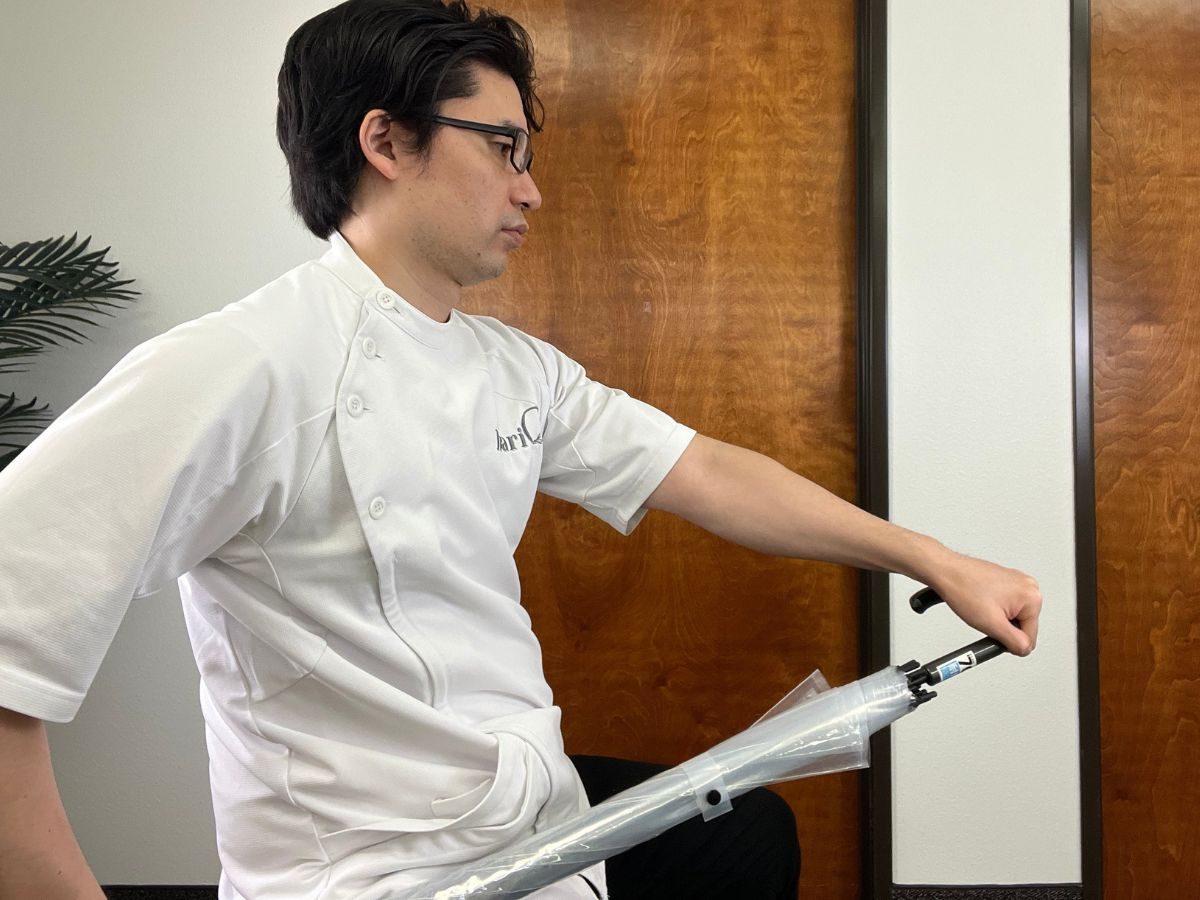
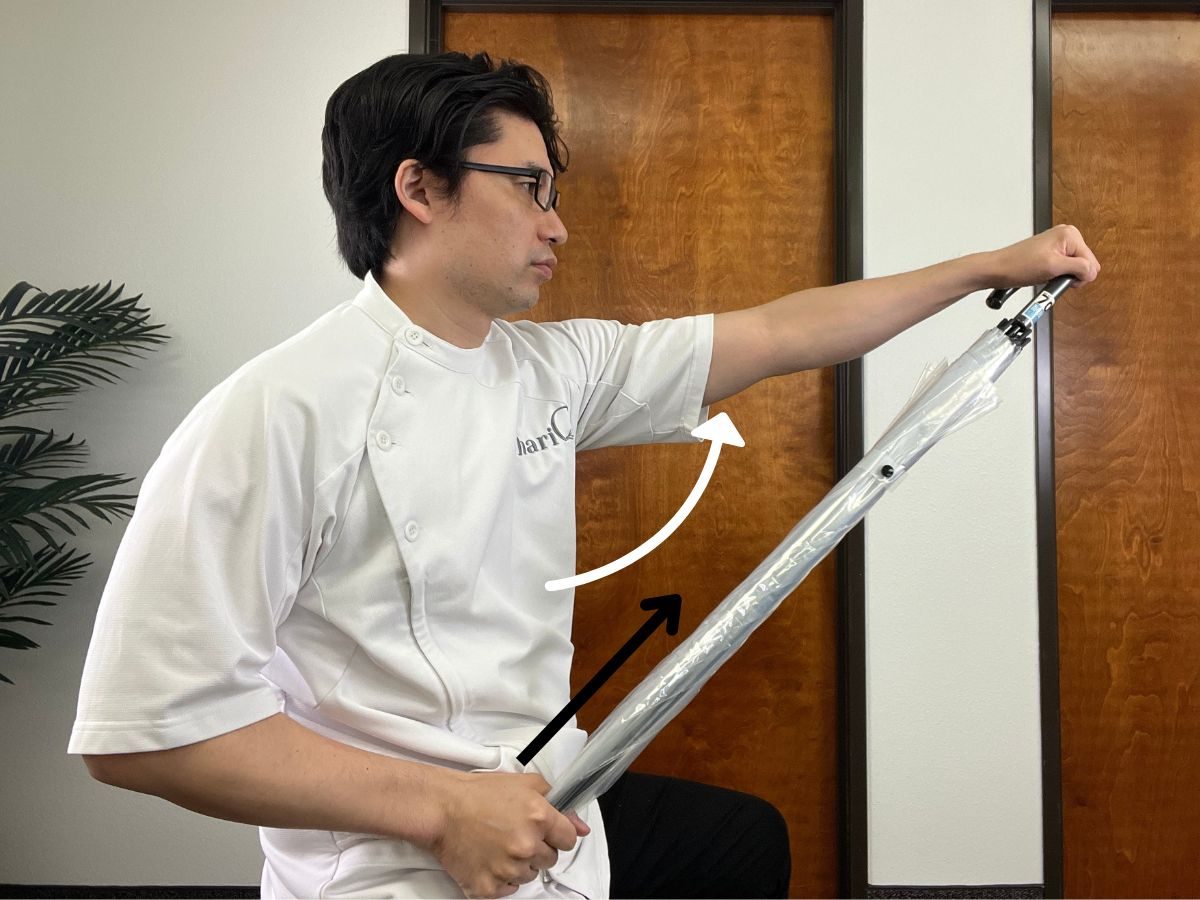
The last exercise is shoulder flexion. Sit down, straighten your arm, and gently move your hand forward as far as you comfortably can. If you experience any discomfort, use the umbrella with your other hand to push and help raise your shoulder a little further. Take a moment to relax, and then repeat this process three more times.
3. Massage
Massage is another modality that can improve pain, range of motion, and recovery by increasing blood flow and softening muscle tension.
The massage technique I use is called trigger point massage, which targets specific points in the muscle. These trigger points can be felt as small lumps, typically no larger than a pea. When pressed, a trigger point can feel tender or sore. Additionally, a taut band may be present in the muscle, which feels like a cord or small cable and extends from the trigger point to its attachments. This tight band can limit your range of motion and cause stiffness in your shoulder, ultimately leading to a frozen shoulder. If you’re interested, I can also read my other blog post on How to massage for a frozen shoulder by yourself (9 Steps).
4. Heat Therapy
Near-infrared Heat Lamp
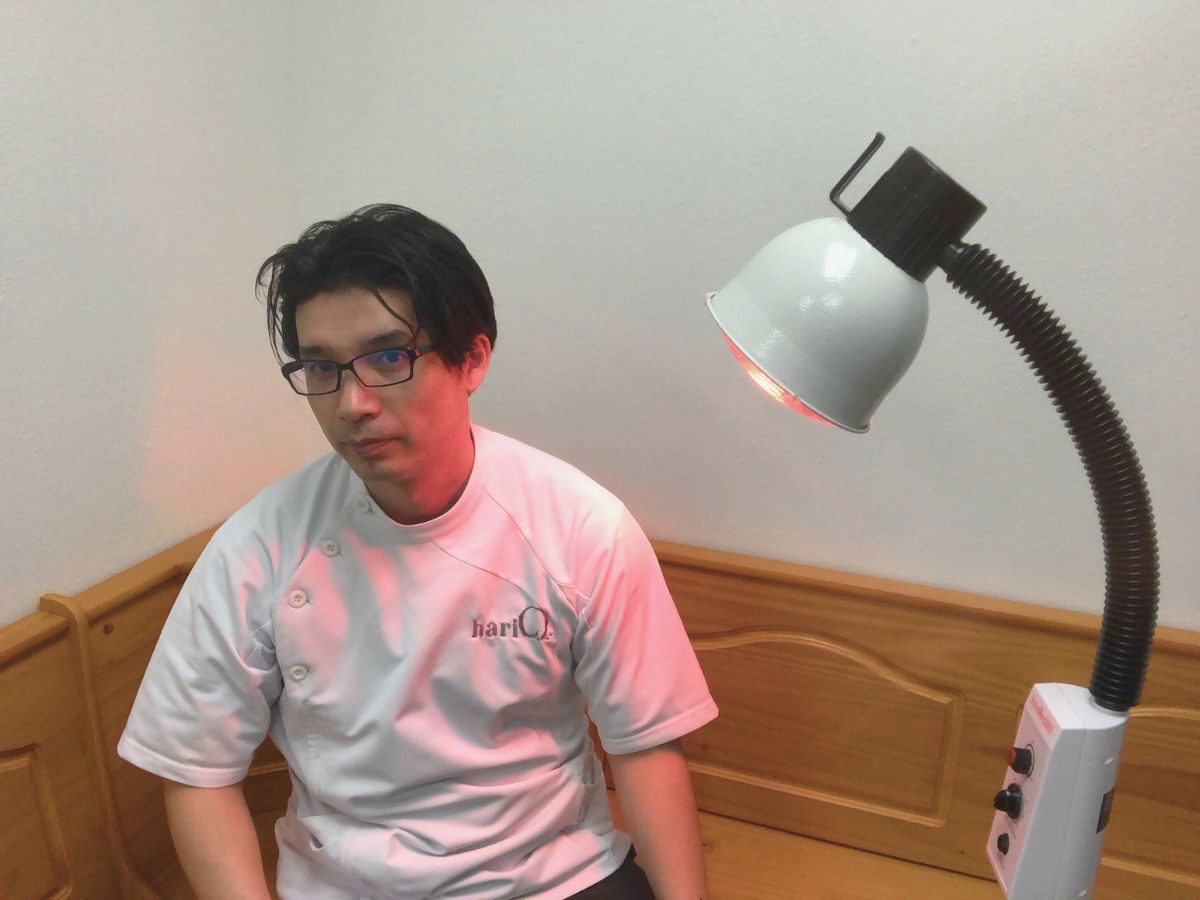
I use a near-infrared heat lamp in my acupuncture clinic. This type of therapy uses light to generate heat in the body’s tissues. It involves using a device that emits near-infrared light, penetrating the skin and being absorbed by the body’s cells and tissues. The absorbed light energy is then converted into heat, which can help increase blood flow, reduce inflammation, and speed up tissue repair.
Heat Pack
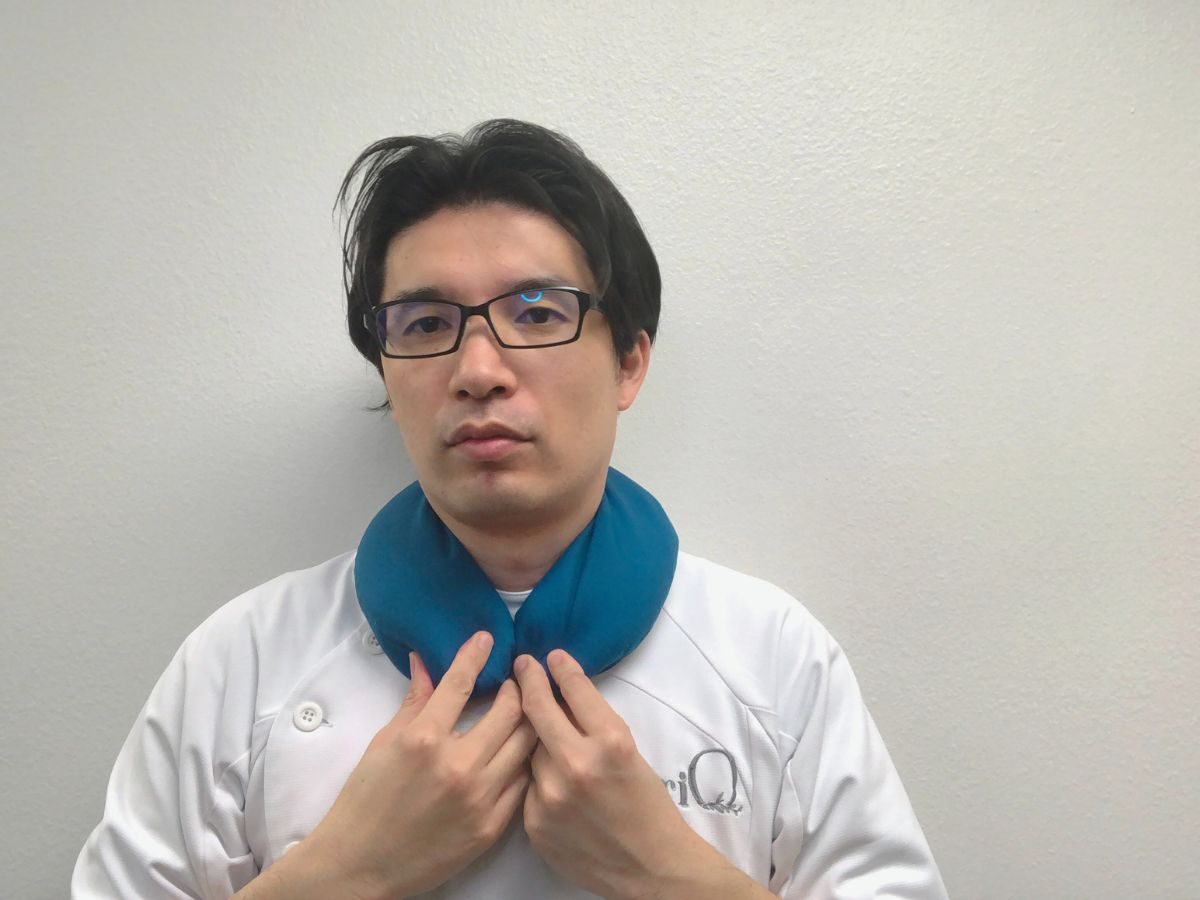
Using a heat pack can help loosen your muscles, increase blood flow, and soften your tissues, which can improve your range of motion and reduce pain. For instance, you can use a heat pack made for the neck. You can also tuck the pack into your clothes and apply it directly to your shoulder for extra relief.
Hot Shower

You can also apply a hot shower to your shoulder every night to loosen up the tightness. While applying hot shower to your shoulder, you can also perform the stretching exercise from Step 3, called the pendulum, to further increase the range of motion.
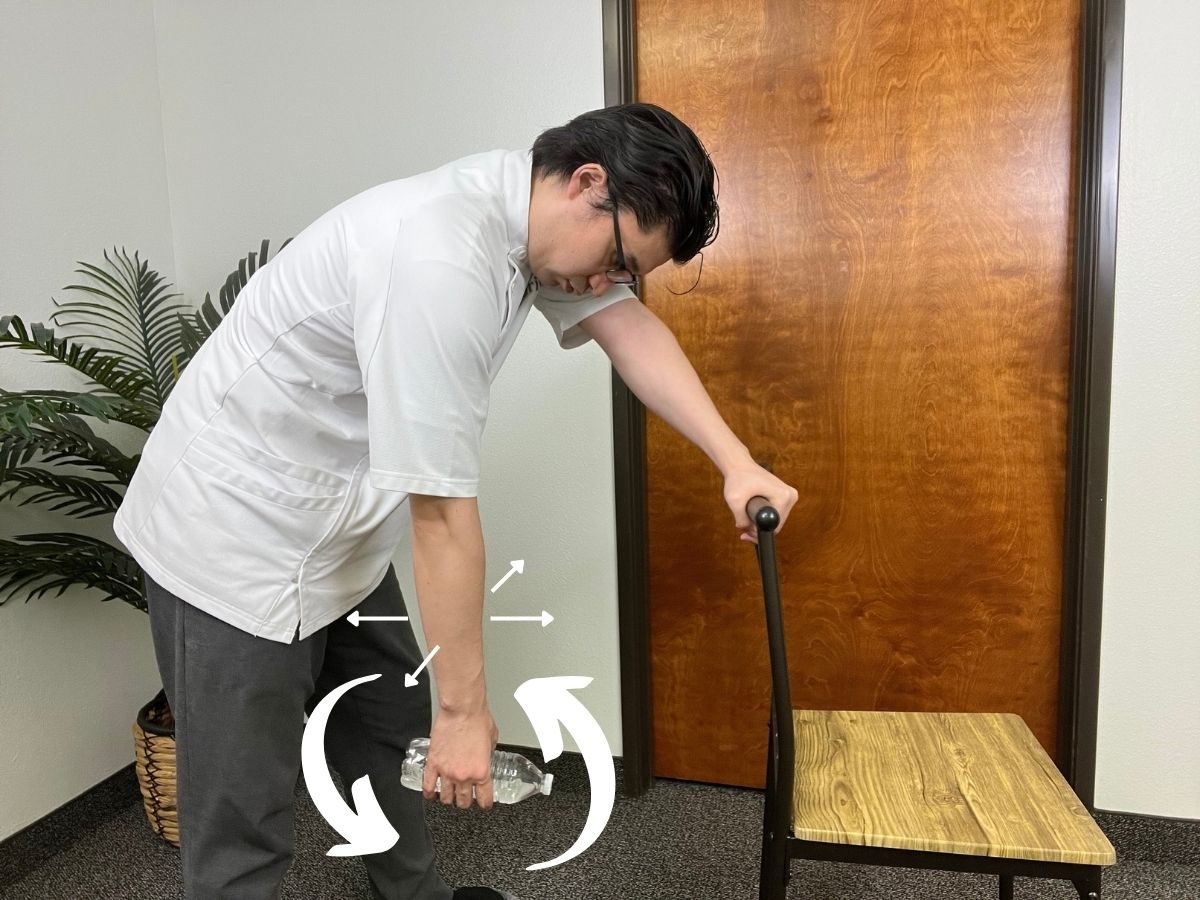
5. Diet / Supplement
Your food and nutrients accelerate and soften the tissue, loosen muscle tightness, and reduce joint inflammation.
Anti-Oxidants Diet
Incorporating the following nutrient-rich foods into your diet, which are high in antioxidants, can potentially aid in reducing inflammation and easing the symptoms of frozen shoulders:
- Berries like blueberries, strawberries, and goji berries
- Dark leafy greens such as spinach
- Citrus fruits like oranges and lemons
- Colorful vegetables including red bell peppers
- Herbs and spices like parsley and turmeric
- Nuts such as walnuts and pistachios
- Fatty fish like salmon
Magnesium Glycinates
There are mainly 8 different kinds of magnesium: oxidate, malate, citrate, sulfate, gluconate, hydroxide, taurate, and glycinate. Each magnesium has slightly different functions for the human body; for example, magnesium oxidate and citrate help more bowel movement and indigestion. But, glycinate help more for muscle tensions and inflammation.
Important Note
By following these 5 tips regularly, you can accelerate the healing process and avoid the necessity of steroid shots or prolonged suffering from frozen shoulder. However, if you continue to experience difficulty with shoulder movement, you may want to explore alternative treatments such as acupuncture before opting for painful injections.
Pursuing Your Health is Our Passion
Call or Text 972-777-0836
We'll be happy to answer your questions.
Is Acupuncture Effective for Frozen Shoulder?
Yes. Acupuncture is very effective for frozen shoulders. We examined your shoulder pain and muscle tightness during the initial acupuncture session. You may be unable to bend forward or lean back due to pain. The treatments focused on reducing inflammation and swelling and restoring movement in the shoulder. Acupuncture has been shown in many studies to be incredibly practical in reducing pain and inflammation due to its ability to stimulate the body to release its natural painkillers. So, you start feeling relieved from the pain after each session.
When Should I start Acupuncture?
As a general rule of thumb, the sooner one receives treatment, the better the prognosis. Some patients come for frozen shoulder treatment months or even years after the initial onset, and these chronic cases are often more complex and take a much longer time to achieve results. Even then, recovery is not guaranteed.
How Often Should I Schedule Acupuncture Sessions?
Regarding the frequency of treatments, Acupuncture follows a simple rule. Acute and relatively new conditions are most effectively treated with more frequent visits, whereas chronic and old conditions can benefit from more widespread treatments. In other words, if you just had an onset of frozen shoulder, you will probably be prescribed 2-3 treatments per week in order to get the most effective results, and chronic cases will generally come in only once a week.
If you or a loved one was diagnosed with a frozen shoulder and want to learn more about acupuncture and whether it’s appropriate for your case, send us a message through our contact page. Thank you for taking the time to read this blog post! I appreciate your interest and hope to see you again for future posts.
We understand this can be a lot of information and overwhelming: if you are looking for more support and answers, set up a free consultation with our Frozen Shoulder Specialist, Satoru Ozawa. Share your story, get your questions answered, and learn how you can set yourself up for tremendous success in achieving a healthy life.
RECENT ARTICLES
These blogs are about natural remedies, acupuncture, Chinese medicine, Chinese herbs, and health tips.
Tinnitus & Acupuncture: Explore Proven Natural Remedy
A 45-year-old man came to my clinic looking for some relief from the ringing in ears because he discovered that...
Read More
Satoru Ozawa, L.Ac, ATC
hariQ acupuncture & herbs
Licensed acupuncturist, Certified Athletic Trainer and Chinese herbal specialist. With his 10 years of experience in Oriental Medicine, he will recommend the best natural Remedies, including Acupuncture, Chinese herbs, and health tips to relieve your suffering.


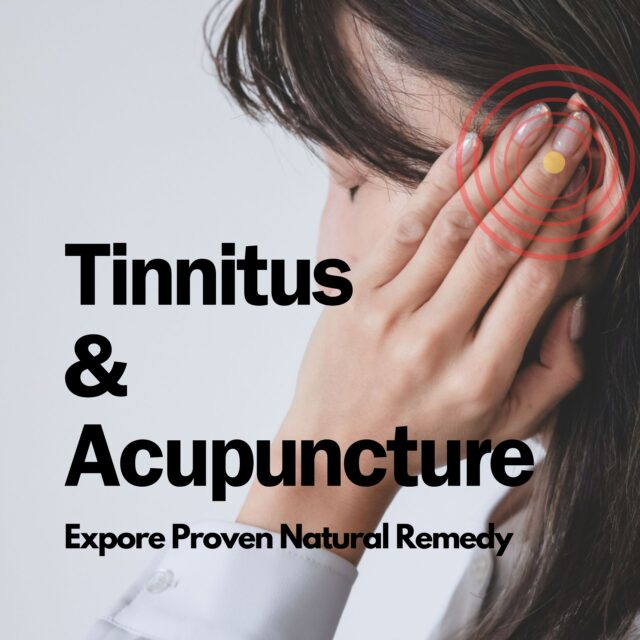
1 comment